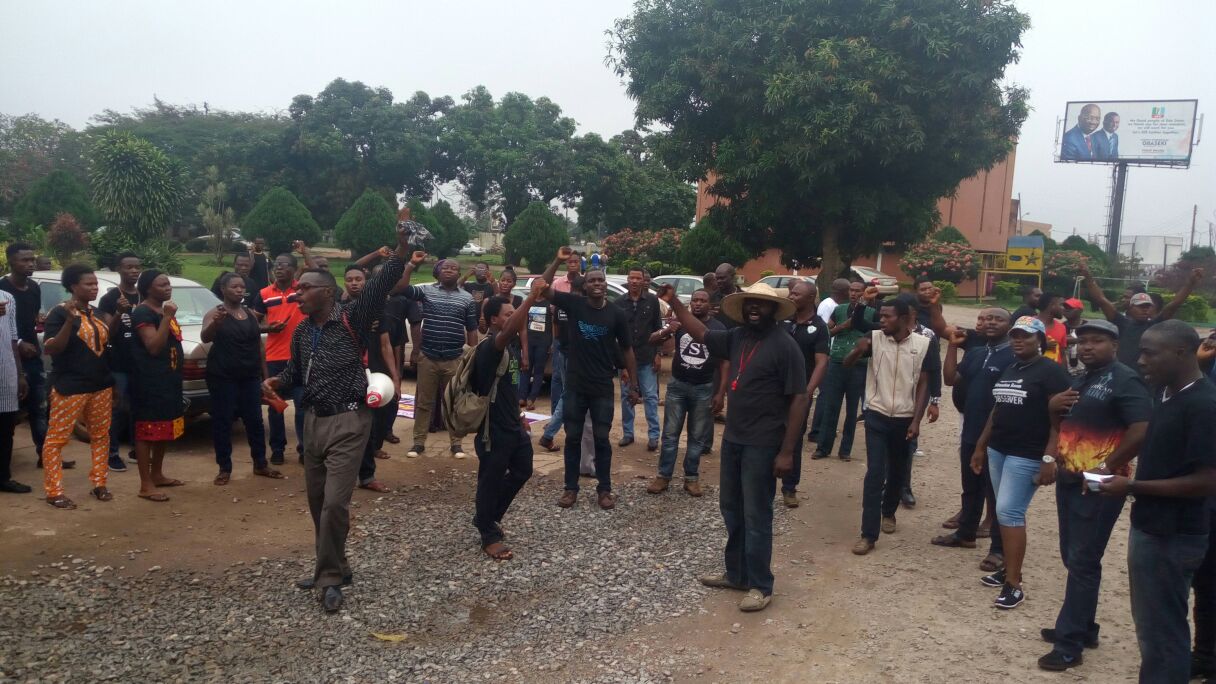WASHINGTON – Since Sept. 2014, when U.S. Army Africa leadership arrived in Liberia to help contain the historic outbreak of Ebola virus disease in West Africa, the United States is transitioning its contributions to civilian and nongovernmental organizations there as the World Health Organization reports a drop in confirmed cases.

Last month, Pentagon Press Secretary Navy Rear Adm. John Kirby described how the whole-of-government approach led by the U.S. Agency for International Development, or USAID, and the Defense Department had mobilized and adapted its resources in an austere environment while supporting a critical mission.
“Our rapid deployment of personnel, from engineers to logisticians, provided for the international civilian response by NGOs, USAID and the United Nations to grow their capability and capacity on the ground,” Kirby said on Friday.
The United States has backed more than 10,000 civilian responders on the ground in Ebola-affected areas, Kirby added, providing direct and indirect health care support and other functions handled by the military Operation United Assistance in Liberia.
The Defense Department has critically supported the U.S. government Ebola response, he added, “bringing our unique capabilities, specifically speed and scale, to support the civilian-led response in West Africa.”
For the first time since the week ending June 29, 2014, fewer than 100 new confirmed cases have been reported in a week in the three most-affected countries, WHO officials wrote in an Ebola Situation Report.
“Together with our international partners, and the people of the three nations themselves, we have bent the curve of the epidemic and placed it on a much improved trajectory,” White House officials said in a Feb. 11 fact sheet.
According to the Department of Defense, its accomplishments in West Africa are many, including the work performed by U.S. service members, DoD civilians, scientists from the U.S. Army Military Research Institute on Infectious Diseases, the Navy and the Defense Threat Reduction Agency, with partners from USAID, the Centers of Disease Control and Prevention, the National Institutes of Health, the Public Health Service and many others.
For DoD, according to the White House fact sheet, $112 million will be allocated for Ebola vaccines and diagnostics.
The Defense Advanced Research Projects Agency will receive $33 million for phase I clinical trials of experimental vaccines and therapeutics. Diagnostic efforts will receive $12 million.
The Chemical and Biological Defense Program will receive $50 million to continue work on vaccines, therapeutics and diagnostic systems for mitigating the spread of Ebola.
And $17 million will go to procure detection and diagnostic systems, mortuary supplies, and isolation transport units.
In Liberia, U.S. civilian and military personnel trained more than 1,500 health care workers, helping them provide safe and direct medical care to Ebola patients, according to official.
In the region, the United States helped facilitate the building of 15 Ebola treatment units in the region, 10 of them built by DoD personnel. The facilities have made possible the testing and isolation of hundreds of patients.
DoD also provided to the region 1.4 million sets of personal protective equipment.
DoD personnel built the Monrovia Medical Unit to treat Ebola-infected health care workers, with staffing by members of the U.S. Public Health Service Commissioned Corps. DoD is now transitioning nonclinical management to USAID, the Department of Defense said.
DoD also provided seven mobile laboratories to the region, reducing the time to diagnosis from days to hours. The labs have tested more than 4,000 samples since September.
The Defense Department also has made significant contributions to vaccine and drug development for Ebola virus disease.
USAMRIID and DTRA made medical countermeasure, funding and other major contributions to two vaccine candidates — ChAd3 and VSV-ZEBOV – that have completed phase 1 human clinical trials.
USAMRIID and DTRA also have contributed to developing and funding several candidate drugs – including ZMapp and TKM Ebola — to treat patients infected with the disease.
Some already have been used in patients under compassionate use in the United States, Western Europe and Africa.
TKM-Ebola was tested in nonhuman primates and has shown evidence of activity against Ebola. This candidate drug is produced by the Canadian company Tekmira Inc. under a contract from the DoD Joint Program Executive Office for Chemical and Biological Defense.
On Jan. 25, President Barack Obama approved a plan formulated by USAID, the U.S. government lead in West Africa, and the Defense Department to transition the Liberia-based Operation United Assistance to civilians and international organizations working there.
The plan includes follow-on activities and supporting staffs for a modified headquarters in Liberia and augmentation for Operation Onward Liberty, a State Department-funded U.S. Africa Command program aimed at building partnership capacity with the Armed Forces of Liberia.
The plan also outlines a defense preparedness program and other security-cooperation activities.
“DoD personnel are coming home but the United States is not leaving West Africa,” defense officials said. “The U.S. government civilian-led response will grow in size and number in the weeks ahead, and continue the fight against Ebola.”
Of the 2,800 troops deployed, about 1,500 are already back in the United States, and nearly all of those remaining will return home by April 30.
After April 30, a transition element of approximately 100 DoD personnel will remain in Liberia to respond to Ebola-related contingences and expand security cooperation efforts.
On March 2, military personnel will make the Operation United Assistance intermediate staging base in Dakar, Senegal, a cooperative security location, where it will be available to support a range of missions.
The Cooperative Threat Reduction, or CTR, Program plans to increase its bio-surveillance capacity, including related biosecurity and biosafety capabilities in West Africa.
Over time the program will expand its capacity, augmenting partner-country capability to detect and report outbreaks of dangerous infectious diseases.
As DoD draws down its presence in Liberia, the United States will continue to support the regional governments alongside the international humanitarian and public health community, defense officials said.







Esther Omobogie liked this on Facebook.